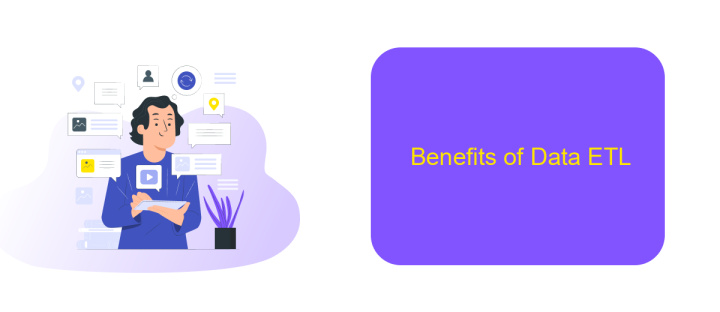Data ETL Meaning
Data ETL (Extract, Transform, Load) is a crucial process in data management and analytics. It involves extracting data from various sources, transforming it into a suitable format, and loading it into a destination system. This article explores the significance of ETL in ensuring data quality, consistency, and accessibility, which are essential for informed decision-making and business intelligence.
What is Data ETL?
Data ETL (Extract, Transform, Load) is a crucial process in data management and integration. It involves extracting data from various sources, transforming it into a suitable format, and loading it into a destination system for analysis or storage. This process ensures that data is clean, consistent, and ready for use in business intelligence, reporting, and analytics.
- Extract: This step involves retrieving raw data from multiple sources such as databases, APIs, or flat files.
- Transform: During this phase, the extracted data is cleaned, enriched, and formatted to meet specific requirements. This may include filtering out errors, aggregating data, or converting data types.
- Load: The final step is loading the transformed data into a target system, such as a data warehouse, for further analysis or reporting.
Tools like ApiX-Drive can simplify the ETL process by providing seamless integration capabilities. ApiX-Drive allows users to connect various data sources and automate the data flow, reducing manual effort and ensuring data accuracy. By leveraging such tools, businesses can efficiently manage their data pipelines and make informed decisions based on reliable data.
The Importance of Data ETL

Data ETL (Extract, Transform, Load) is a critical process in managing and utilizing data for informed decision-making. By extracting data from various sources, transforming it into a consistent format, and loading it into a data warehouse, organizations can ensure data accuracy and accessibility. This process not only helps in maintaining data integrity but also enhances the efficiency of data analysis, enabling businesses to derive actionable insights and drive strategic growth.
Integrating data from multiple sources can be challenging, but services like ApiX-Drive simplify this process. ApiX-Drive allows seamless integration of various applications and data sources, automating data workflows and reducing manual effort. By leveraging such tools, organizations can streamline their ETL processes, ensuring real-time data availability and improving overall data management. This ultimately leads to more reliable data-driven decisions, fostering innovation and competitive advantage.
Steps Involved in Data ETL

Data ETL (Extract, Transform, Load) is a crucial process for managing and utilizing data effectively. It involves three primary steps that ensure data is accurately transferred from source systems to a data warehouse or other target systems.
- Extraction: This step involves retrieving raw data from various sources such as databases, APIs, or flat files. Tools like ApiX-Drive can facilitate seamless integration and extraction of data from multiple sources, ensuring a smooth data flow.
- Transformation: During this phase, the extracted data is cleaned, enriched, and converted into a suitable format for analysis. This may include filtering, aggregating, and joining data to ensure consistency and accuracy.
- Loading: The final step involves loading the transformed data into a target system, such as a data warehouse or a data lake, where it can be accessed for reporting and analysis purposes.
By following these steps, organizations can efficiently manage their data, ensuring it is accurate, consistent, and ready for analysis. Utilizing tools like ApiX-Drive can significantly streamline the ETL process, making it easier to handle complex data integration tasks.
Benefits of Data ETL

Data ETL (Extract, Transform, Load) processes offer numerous benefits for organizations by enabling efficient data management and analysis. One of the primary advantages is the ability to consolidate data from various sources into a single, unified view. This consolidation facilitates better decision-making and ensures that all departments within an organization are working with consistent data.
Furthermore, ETL processes help in improving data quality. By transforming and cleaning data during the ETL process, organizations can eliminate errors, redundancies, and inconsistencies. This results in more accurate and reliable data, which is crucial for analytics and reporting purposes.
- Enhanced data integration from multiple sources
- Improved data quality and consistency
- Streamlined data processing and analysis
- Better decision-making with unified data
Services like ApiX-Drive can significantly simplify the setup of ETL processes by automating data integration and transformation tasks. This not only reduces the time and effort required but also minimizes the risk of errors, allowing businesses to focus on leveraging their data for strategic insights and growth.


Challenges of Data ETL
One of the primary challenges of Data ETL (Extract, Transform, Load) is handling the vast amount of data from diverse sources. This data often comes in various formats, requiring significant effort to standardize and clean it before it can be effectively used. Additionally, managing the data's quality and ensuring its accuracy throughout the ETL process can be a daunting task, as any discrepancies can lead to unreliable analytics and business decisions.
Another significant challenge is integrating different systems and platforms to ensure seamless data flow. This often involves complex configurations and can be time-consuming. Tools like ApiX-Drive can simplify this process by providing automated integrations and real-time data synchronization between various applications and databases. By using such services, organizations can reduce the manual workload and minimize errors, allowing them to focus more on data analysis and deriving actionable insights.
FAQ
What is Data ETL?
Why is ETL important in data management?
What are the main steps involved in the ETL process?
How can I automate the ETL process?
What are some common challenges in ETL?
Routine tasks take a lot of time from employees? Do they burn out, do not have enough working day for the main duties and important things? Do you understand that the only way out of this situation in modern realities is automation? Try Apix-Drive for free and make sure that the online connector in 5 minutes of setting up integration will remove a significant part of the routine from your life and free up time for you and your employees.

